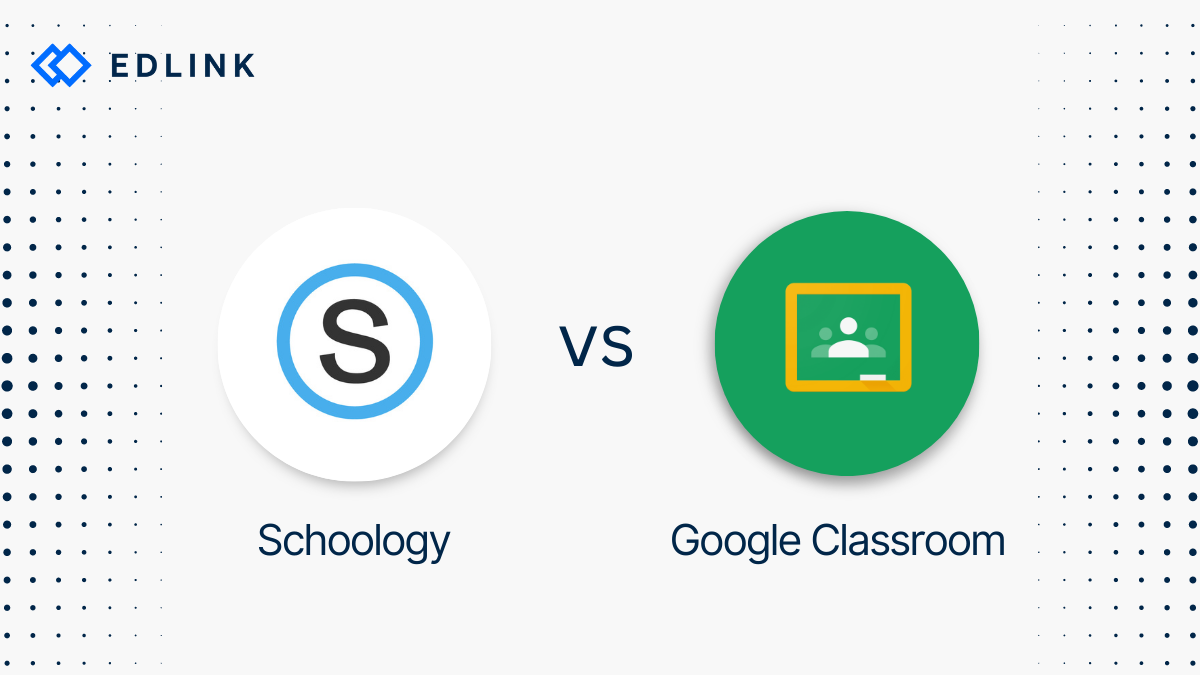The Situation:
Schools demand EdTech applications integrate with their systems. Your development team only has enough capacity to build one LMS connection before back-to-school season. Here’s what you need to know for a clear decision.
Why Consider Schoology?
PowerSchool acquired Schoology. This will help Schoology’s growth and adoption. With over 20 million users, Schoology is a very common name in the LMS space. And since Schoology requires payment, users are more engaged from the beginning.
- Schoology currently holds some statewide contracts. These schools can opt-in to use the LMS – securing an even larger market share for PowerSchool.
- Schoology supports LTI v1.1 and LTI v1.3 integrations. Apps can appear in the LMS, so users won’t have to leave the LMS website – a clean user experience.
- Schoology focuses on K-12 education. If your product does the same, then the demographic makes leads even more qualified.
Common Schoology Integration Errors
It’s better to compare problems so you know what you and your team can handle. For a Schoology connection, the LMS doesn’t code errors like others. Instead, you’ll get sentences. We typically see these:
- “You cannot delete grading periods that are used by any existing assignments”
You’d have to go back and update each assignment to make sure they don’t refer to the grading period you want to delete. Then you can delete the grading period by Schoology.
- “You cannot delete grading categories that are used by any existing assignments”
Like the bullet above, each assignment can’t refer to the grading categories you want to delete. Then you can delete the grading category by Schoology.
- Assignments cannot be created in a “parent” grading period.
Parent grading periods are created when a “child” grading period has been created under it. For example, you create a grading period called “2020”, with a child grading period called “Fall 2020”. You can ONLY add new assignments to the “Fall 2020”. Any grading period that has children CANNOT have assignments added to it.
- Schoology assignments must be associated with a grading period.
- You’ll rewrite your error handling code if Schoology changes the wording of their error messages.
Explore Schoology’s documentation here.
Why Consider Google Classroom?
Google Classroom is another aspect of the myriad of Google products. In a 2021 press release, Google Classroom notes the 150+ million users the LMS has grown to.
- On the development side of making the integration, Google’s documentation is easy to follow and use.
- Using Google Classroom also creates Google accounts, which allows access to other Google Workspace products (e.g. Docs, Spreadsheets, Slides, etc.). This access is a selling point for the LMS. And your product’s future development can leverage Google Workspace.
- Google Classroom let’s users authorize third-party applications. And your development team and administrators both have access to the Classroom API. With the authorization and access to the API, implementation to a classroom (and not a district) is possible.
Common Google Classroom Error Codes
Like we said, Google’s documentation is pretty good, so there are fewer complicated errors that we face. But we do regularly see these 3:
- @ProjectPermissionDenied | The Developer Console project is not permitted to make this request.
This error shows up when you try to modify an assignment in the Google Classroom API that you didn’t create. I.e., if a teacher uses the Classroom API to create an assignment, your company can’t update it.
- INVALID_ARGUMENT | You cannot modify the attachment(s) for an assignment.
The API throws that error if you try to modify attachments for a submitted assignment.
- There isn’t a “global roles” concept.
You won’t be able to identify roles like “schools”. If you need to define a school in a particular district, the district’s information will lump together.
Which One Should You Choose?
If you build integrations yourself, no option is fast, easy, or ideal. We suggest to choose the LMS that your team is more equipped to tackle.
- Which LMS fits better with how you sell your product?
- Is Google Drive, Slides, etc, important to your product now, or in the future?
- Could your product easily support being contained in an iFrame window?
Read More on Integration
Here are other articles we’ve written on Google Classroom and Schoology to help you on your journey:
- The Challenges of Integrating with Schoology
- What Can I Do With the Schoology API?
- How to Implement Single Sign-On With Schoology
- What EdTech Developers Should Know about the 2021 Google Classroom Updates
- API vs. LTI Integration for Google Classroom
- How to Whitelist an Applicant in Google
Learn More about Edlink
If you're looking for a partner who can help guide you through developing LMS integrations (like Google Classroom or Schoology), then let’s introduce ourselves. We’re Edlink!

